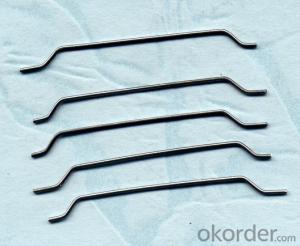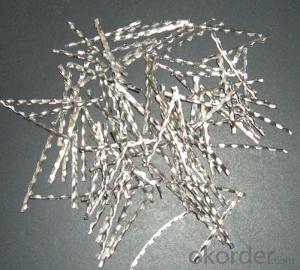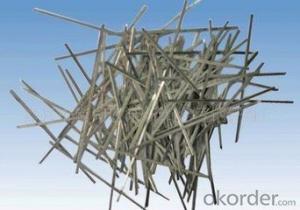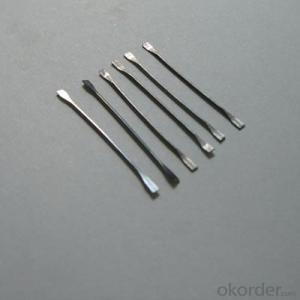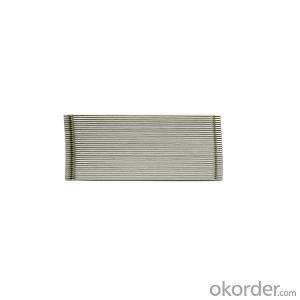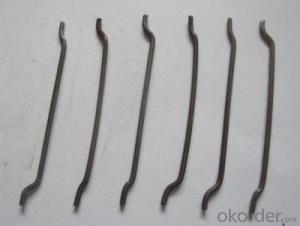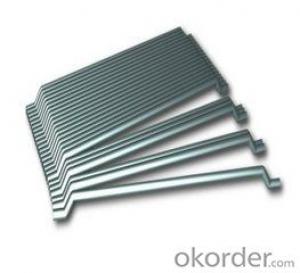Steel Fiber Straight Type cCoppercoatted for Concrete
- Loading Port:
- Tianjin
- Payment Terms:
- TT OR LC
- Min Order Qty:
- 1000 kg
- Supply Capability:
- 30000 kg/month
OKorder Service Pledge
OKorder Financial Service
You Might Also Like
Quick Details
Place of Origin: China (Mainland)
Model Number: HT-ST
Material: Steel
The Products
Steel fiber for Concrete Reinforcement
High tensile strength 2.Length 6-60mm 3.Diameter 0.2-1.0mm
Specifications
Steel fiber for Concrete Reinforcement
1.High tensile strength
2.Length 6-60mm
3.Diameter 0.2-1.0mm
4.ISO9001, CE, TUV
Specification | Diameter (mm) | Length (mm) | Aspect ratio (L/D) | Tensile strength (Mpa) |
0.12/6 | 0.12 | 6 | 50 | 2500 |
0.2/6 | 0.2 | 6 | 30 | 2500 |
0.2/13 | 0.2 | 13 | 65 | 2500 |
0.3/25 | 0.3 | 25 | 83 | 2500 |
0.4/25 | 0.4 | 25 | 63 | 1200 |
0.4/30 | 0.4 | 30 | 75 | 1200 |
0.5/30 | 0.5 | 30 | 60 | 1100 |
0.5/25 | 0.5 | 25 | 50 | 1100 |
0.55/25 | 0.55 | 25 | 45 | 800 or 1000 |
0.6/30 | 0.6 | 30 | 50 | 1000 or 1100 |
0.7/30 | 0.7 | 30 | 43 | 1000 |
0.7/35 | 0.7 | 35 | 50 | 1000 |
0.75/35 | 0.75 | 35 | 47 | 1000 |
0.75/60 | 0.75 | 60 | 80 | 1000 |
0.8/60 | 0.8 | 60 | 75 | 1000 |
0.9/50 | 0.9 | 50 | 56 | 1000 |
0.9/60 | 0.9 | 60 | 67 | 1000 |
1.0/50 | 1.0 | 50 | 50 | 1000 |
1.0/60 | 1.0 | 60 | 60 | 1000 |
Picture
Steel fiber straight type
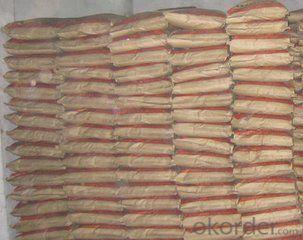
pp bag
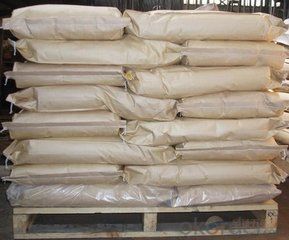
any type steel fiber
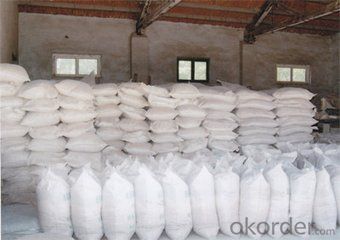
FAQ
certificated: ISO 9001
Technical advantages of Daye steel fiber:
A. Improve mechanical performance of concrete
B. Provide uniform distribution throughout concrete with excellent mixing
C. No balling or caking by adopt correct mixing method
D. Reduce concrete volume
- Q:Can melt extract stainless steel fiber be used in tunnel boring machine applications?
- Indeed, tunnel boring machine applications can incorporate melt extract stainless steel fiber. Renowned for their impressive strength and resistance to corrosion, stainless steel fibers prove ideal for deployment in challenging surroundings like tunneling. By fortifying the concrete utilized in tunnel construction, these fibers enhance its mechanical attributes and durability holistically. Moreover, they bolster the concrete's ability to withstand cracks, thereby diminishing the potential for structural collapse. Consequently, employing melt extract stainless steel fiber in tunnel boring machine applications serves to heighten the longevity and safety of tunnel structures.
- Q:Can melt extract stainless steel fiber be used in marine structures?
- Yes, melt extract stainless steel fiber can be used in marine structures. Stainless steel is known for its corrosion resistance, making it suitable for use in marine environments where exposure to saltwater and high humidity is common. The melt extract stainless steel fibers can reinforce concrete or other construction materials used in marine structures, providing added strength and durability. These fibers are resistant to rust and can withstand the harsh conditions found in marine environments, making them an excellent choice for marine structures such as piers, docks, and offshore platforms. Additionally, the use of stainless steel fibers can help improve the overall performance and lifespan of these structures, reducing maintenance and repair costs in the long run.
- Q:Does melt extract stainless steel fiber improve the resistance to acid attack in concrete?
- Concrete, when melt extract stainless steel fiber is added, exhibits improved resistance to acid attack. Renowned for their exceptional corrosion resistance, stainless steel fibers offer enhanced protection against acid attack in concrete. By enveloping the concrete matrix, these fibers create a safeguarding barrier, hindering acid infiltration and diminishing corrosion hazards. Moreover, they bolster the concrete's durability and lifespan, rendering it more impervious to acid-induced deterioration. Consequently, the incorporation of melt extract stainless steel fiber in concrete results in a substantial enhancement of its acid attack resistance.
- Q:What are the different quality standards and certifications for melt extract stainless steel fiber?
- Melt extract stainless steel fiber must adhere to various quality standards and certifications to ensure its performance and quality. Here are some of the most common ones: 1. ISO 9001: This international standard guarantees that the manufacturer has a consistently effective quality management system that meets customer requirements and regulatory obligations. 2. ASTM International: Globally recognized for setting standards, ASTM International has developed specific standards for stainless steel fibers. For instance, ASTM A820 focuses on steel fibers for fiber-reinforced concrete, while ASTM A1094 deals with steel fibers for concrete reinforcement. 3. EN Eurocodes: The Eurocodes are a collection of European standards for structural design. EN 14889-1 is the specific European standard for steel fibers used in concrete reinforcement, outlining requirements for mechanical properties, dimensions, and durability. 4. AISI: The American Iron and Steel Institute (AISI), representing North American steel producers, has established AISI 304 or AISI 316 as specifications for stainless steel fibers. These specifications cover chemical composition, mechanical properties, and other fiber characteristics. 5. CE Marking: CE marking is compulsory for certain products sold in the European Economic Area (EEA). It signifies compliance with essential health, safety, and environmental requirements specified in European Union directives. 6. ICC-ES: The International Code Council Evaluation Service (ICC-ES) offers evaluation reports and certifications for building products. Their evaluation criteria ensure that steel fibers employed in concrete reinforcement meet specific safety and performance requirements. It is essential to consider that the applicable quality standards and certifications for melt extract stainless steel fiber may vary depending on its intended application. Consulting the manufacturer or supplier is recommended to determine the relevant standards and certifications for a particular product.
- Q:Can melt extract stainless steel fiber be used in pavement rehabilitation applications?
- Yes, melt extract stainless steel fiber can be used in pavement rehabilitation applications. It offers excellent reinforcement and durability properties, enhancing the strength and longevity of the pavement. Additionally, its resistance to corrosion and high temperature make it suitable for such applications.
- Q:What is the recommended fiber content when using melt extract stainless steel fiber in concrete?
- The recommended fiber content when using melt extract stainless steel fiber in concrete typically ranges from 1% to 3% by volume. This range is considered optimal for achieving the desired reinforcement and performance characteristics in the concrete. However, it is important to note that the exact fiber content can vary depending on factors such as the specific application, design requirements, and desired properties of the concrete. Therefore, it is recommended to consult with a qualified engineer or supplier to determine the appropriate fiber content for a specific project.
- Q:How does melt extract stainless steel fiber affect the impact resistance of shotcrete?
- Shotcrete's impact resistance is greatly enhanced by melt extract stainless steel fiber. Shotcrete, which is typically used in construction and repair projects, is a high-strength concrete material that is sprayed onto surfaces. The inclusion of stainless steel fibers in shotcrete increases its tensile strength and toughness, rendering it highly resistant to impact and dynamic loads. Manufactured through a specialized process involving the melting of raw materials and their rapid extraction into thin, elongated fibers, melt extract stainless steel fibers are then incorporated into the shotcrete mix, ensuring even dispersion throughout the material. These fibers create a three-dimensional reinforcement network within the shotcrete, providing enhanced resistance to cracking and fragmentation when subjected to impact. The stainless steel fibers in shotcrete act as micro-reinforcements when confronted with impact forces, effectively absorbing and distributing the energy throughout the material. This prevents the formation and propagation of cracks, leading to improved impact resistance. The fibers also increase the shotcrete's ductility, allowing it to absorb more energy before failure. Furthermore, the corrosion resistance of stainless steel fibers ensures the long-term durability and performance of the shotcrete. These fibers do not rust or deteriorate over time, even in harsh environmental conditions, further enhancing the overall impact resistance of shotcrete. In conclusion, the addition of melt extract stainless steel fiber significantly enhances shotcrete's impact resistance. The fibers reinforce the material, prevent crack formation, and improve its toughness and ductility. Consequently, shotcrete with stainless steel fibers is an excellent choice for applications where impact resistance is of paramount importance, such as tunnel linings, retaining walls, and protective barriers.
- Q:Can melt extract stainless steel fiber be used in underground parking structures or garages?
- Yes, melt extract stainless steel fiber can be used in underground parking structures or garages.
- Q:How does melt extract stainless steel fiber improve the crack resistance of concrete?
- The crack resistance of concrete is enhanced by melt extract stainless steel fiber in several ways. To begin with, the inclusion of stainless steel fibers in the concrete mix helps to evenly distribute stresses throughout the entire structure. These fibers form a three-dimensional network within the concrete, reinforcing it and preventing cracks from spreading while also improving the efficiency of applied loads. Furthermore, the crack resistance of concrete is improved by the high tensile strength and ductility of stainless steel fibers. These fibers possess exceptional mechanical properties that enable them to absorb and dissipate energy when exposed to external forces or changes in temperature. Consequently, they provide greater resistance to cracking caused by shrinkage, temperature fluctuations, and external loads. Another important factor is the capability of stainless steel fibers to control crack width and limit its propagation. Acting as small bridges across cracks, these fibers reduce their width and prevent them from expanding further. This limitation of crack width ensures the integrity and longevity of the concrete structure. Additionally, stainless steel fibers enhance the flexural strength and toughness of concrete. This increased flexural performance enables the concrete to withstand higher bending stresses and deformations without cracking. Consequently, it enhances the overall crack resistance of the concrete, making it more resistant to initial and subsequent cracking under load. In summary, the addition of melt extract stainless steel fiber significantly improves the crack resistance of concrete by establishing a reinforcing network, absorbing energy, controlling crack width, and enhancing flexural strength and toughness. These combined effects result in a more durable and reliable concrete structure, with reduced cracking and increased resistance to various external factors.
- Q:Does melt extract stainless steel fiber improve the resistance to sulfate attack of shotcrete?
- Yes, melt extract stainless steel fiber does improve the resistance to sulfate attack of shotcrete.
1. Manufacturer Overview |
|
|---|---|
| Location | |
| Year Established | |
| Annual Output Value | |
| Main Markets | |
| Company Certifications | |
2. Manufacturer Certificates |
|
|---|---|
| a) Certification Name | |
| Range | |
| Reference | |
| Validity Period | |
3. Manufacturer Capability |
|
|---|---|
| a)Trade Capacity | |
| Nearest Port | |
| Export Percentage | |
| No.of Employees in Trade Department | |
| Language Spoken: | |
| b)Factory Information | |
| Factory Size: | |
| No. of Production Lines | |
| Contract Manufacturing | |
| Product Price Range | |
Send your message to us
Steel Fiber Straight Type cCoppercoatted for Concrete
- Loading Port:
- Tianjin
- Payment Terms:
- TT OR LC
- Min Order Qty:
- 1000 kg
- Supply Capability:
- 30000 kg/month
OKorder Service Pledge
OKorder Financial Service
Similar products
New products
Hot products
Related keywords
